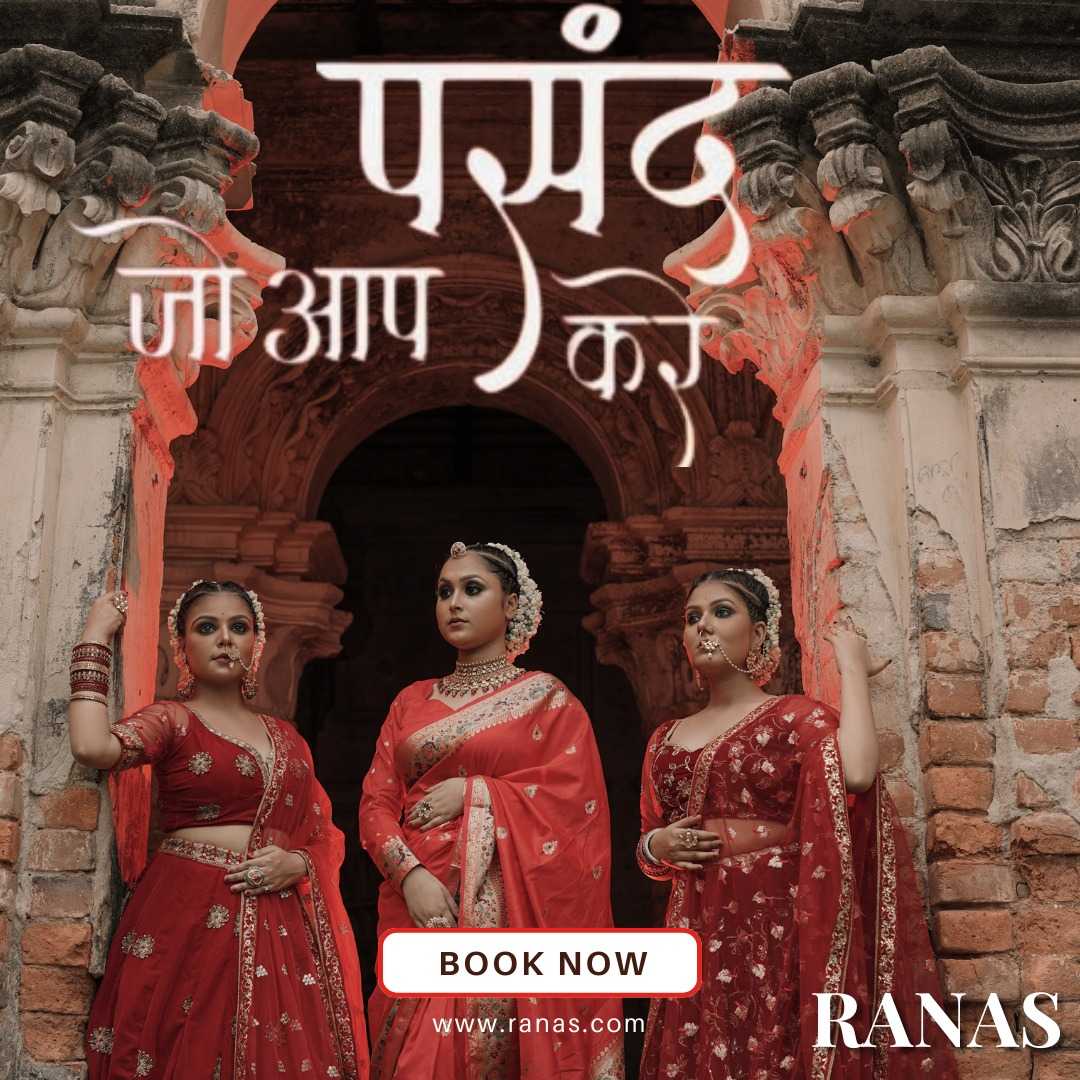Rajasthan, the land of kings, is not only known for its majestic forts and vibrant culture but also for its exquisite traditional attire known as Rajputani Poshak. This attire holds a special place in the hearts of Rajasthani women and is an embodiment of elegance, grace, and cultural heritage. From the intricate designs to the vibrant colors, every element of the Rajputani Poshak reflects the rich history and traditions of Rajasthan.
Historical Significance
The Rajputani Poshak has a deep-rooted historical significance that dates back centuries. It is believed to have evolved from the attire worn by Rajput women during the era of Rajput kingdoms. The attire was not just a symbol of status and royalty but also a reflection of the rich cultural heritage of the Rajput community.
Elements of Rajputani Poshak
Ghagra/Lehenga: The Rajputani Poshak typically consists of a ghagra or lehenga, which is a long skirt that is heavily embroidered and embellished. The ghagra is often made of rich fabrics like silk, chiffon, or georgette and is adorned with intricate zari work, mirror work, and embroidery.
Choli: The choli is the blouse or upper garment that is worn with the ghagra. It is usually short and fitted, showcasing intricate embroidery and embellishments. The choli can be of various styles, including sleeveless, half sleeves, or full sleeves, depending on the occasion and personal preference.
Odhi/Dupatta: The odhi or dupatta is a long scarf or shawl that is draped over the head or shoulders. It is an essential part of the Rajputani Poshak and is often made of fine fabrics like chiffon, silk, or cotton. The dupatta is also intricately designed with embroidery, mirror work, and embellishments, adding to the overall charm of the attire.
Jewelry: No Rajputani Poshak is complete without traditional Rajasthani jewelry. This includes elaborate necklaces, earrings, bangles, maang tikkas, and nose rings. The jewelry is often made of gold, silver, or precious stones and is intricately designed with motifs inspired by Rajasthani culture and nature.
Hairstyle and Accessories: The hairstyle plays a crucial role in complementing the Rajputani Poshak. Women often adorn their hair with flowers, jewelry, or ornamental hairpins known as juda pins. Additionally, they may wear a bindi (decorative dot on the forehead) and apply traditional makeup to enhance their look.
Occasions and Variations
The Rajputani Poshak is worn on various occasions, including weddings, festivals, cultural events, and religious ceremonies. Each occasion may call for a different style or color of Poshak, reflecting the significance of the event.
Weddings: For weddings, Rajput women often opt for richly embroidered and heavily embellished Rajputani Poshak in vibrant colors like red, maroon, or pink. The attire is complemented with exquisite jewelry and intricate hairstyles, creating a stunning bridal look.
Festivals: During festivals like Diwali, Holi, or Teej, women may choose Rajputani Poshak in bright colors such as yellow, orange, or green. These outfits are adorned with traditional motifs and designs, symbolizing joy, prosperity, and celebration.
Cultural Events: Rajput women proudly showcase their heritage during cultural events by wearing Rajputani Poshak with historical motifs, intricate embroidery depicting Rajasthani folktales, and vibrant color combinations that reflect the region's art and culture.
Religious Ceremonies: Traditional Rajputani Poshak is also worn during religious ceremonies and rituals. The attire is usually elegant and modest, reflecting respect and devotion.
Evolution and Modern Adaptations
While the essence of Rajputani Poshak remains deeply rooted in tradition, there have been modern adaptations to cater to changing preferences and trends. Designers and artisans have introduced contemporary elements such as fusion silhouettes, modern cuts, and innovative embellishments while preserving the essence of Rajasthani craftsmanship.
Fusion Wear: Modern Rajputani Poshak may feature fusion wear elements like crop tops, jacket-style cholis, and layered dupattas, blending traditional aesthetics with contemporary fashion.
Color Palette: While traditional colors like red, green, and blue continue to be popular, modern Rajputani Poshak also embraces pastel shades, metallic hues, and monochrome designs to cater to diverse preferences.
Embroidery Techniques: While traditional hand embroidery techniques like gota patti, zardozi, and mirror work remain prevalent, modern adaptations may include machine embroidery, digital prints, and embellishments using unconventional materials.
Accessorizing: Modern Rajputani Poshak is often accessorized with statement jewelry pieces that combine traditional designs with modern elements. This includes fusion necklaces, earrings, and hand accessories that complement the attire while adding a contemporary touch.
Promoting Cultural Heritage
The popularity of Rajputani Poshak extends beyond Rajasthan, with people across India and globally appreciating its beauty and craftsmanship. Fashion shows, cultural events, and exhibitions often showcase Rajputani Poshak, promoting Rajasthan's rich cultural heritage on a global platform.
Designers and fashion enthusiasts are also actively involved in promoting and preserving traditional Rajasthani attire. They collaborate with artisans, incorporate sustainable practices, and educate the younger generation about the significance of Rajputani Poshak, ensuring its legacy continues for generations to come.
Conclusion
In conclusion, Rajputani Poshak is not just a piece of clothing but a symbol of heritage, tradition, and timeless elegance. Its intricate designs, vibrant colors, and historical significance make it a cherished attire among Rajasthani women and a cultural treasure that continues to inspire awe and admiration globally. Whether worn during weddings, festivals, or cultural events, Rajputani Poshak embodies the essence of Rajasthan's rich cultural tapestry, keeping alive the legacy of its royal heritage.
For more info:- leheriya sari




